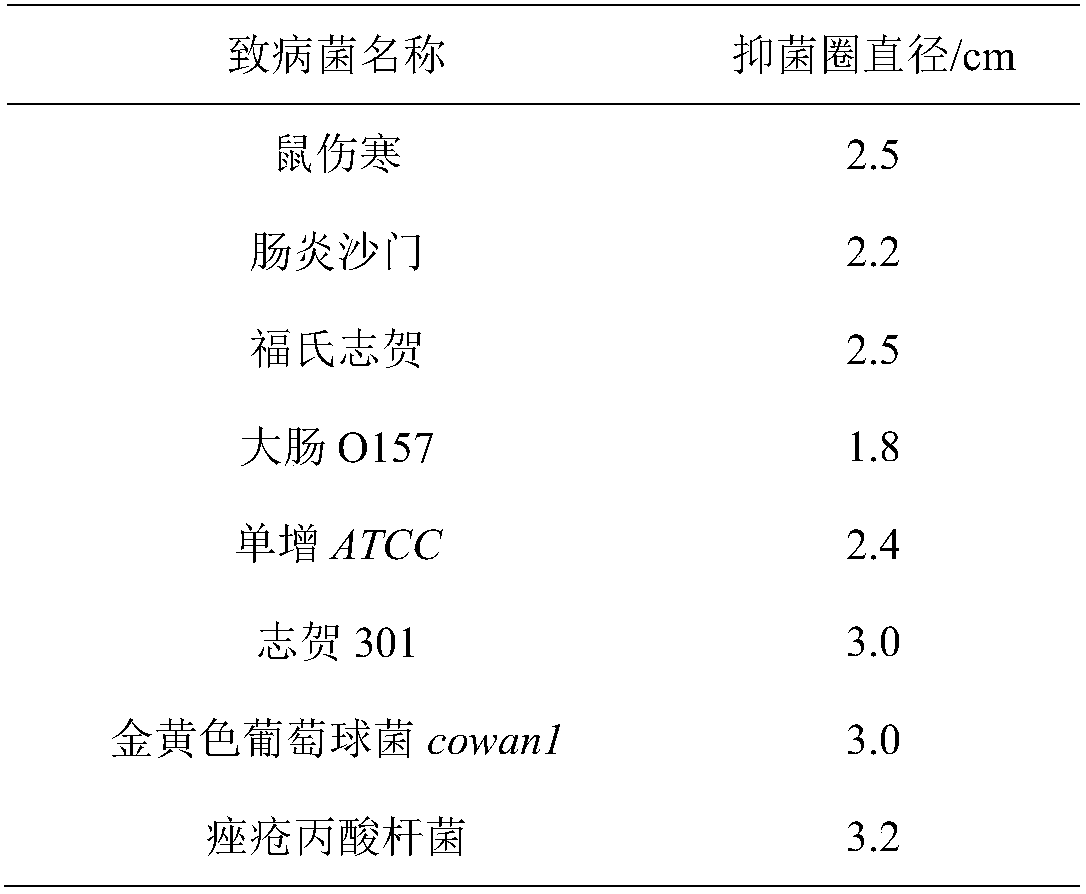Probiotics aloe juice and preparation method and applications thereof
The technology of aloe vera liquid and probiotics is applied in the field of gynecological medical treatment, which can solve the problems of causing diseases, poor efficacy of vaginal antibacterial drugs, imbalance of vaginal flora, etc. Effect
- Summary
- Abstract
- Description
- Claims
- Application Information
AI Technical Summary
Problems solved by technology
Method used
Image
Examples
Embodiment 1
[0029] Embodiment 1 (determination of probiotic aloe liquid fermentation conditions)
[0030] 1. Preparation of aloe vera juice: select fresh, plump, and fleshy Aloe vera leaves, remove leaves with lesions and soft rot, and the average weight of the leaves is about 300-400g. Wipe the surface of the leaves with alcohol to remove the epidermis, use a juicer to squeeze the mesophyll into aloe vera juice, subpackage, centrifuge at 6000rpm / min for 10min, and take the supernatant. The original aloe juice was sterilized by pasteurization, bathed in water at 55°C for 30 minutes, cooled and stored in a refrigerator at 4°C for future use.
[0031] 2. Fermentation: 6 kinds of probiotics after secondary activation were selected and mixed according to the ratio of 1:1 to prepare a compound probiotic suspension, which was added to the original aloe juice at a 5% inoculum amount, supplemented with glucose, and carried out co-fermentation.
[0032] 3. Setting of fermentation conditions: set ...
Embodiment 2
[0034] Embodiment 2 (bacteriostasis test)
[0035] Experimental materials: probiotics, typhoid fever, Salmonella enteritidis, Shiga flexneri, large intestine O157, ATCC, Shiga 301, Staphylococcus aureus cowan1, Aloe vera, LB medium, Oxford cup.
[0036] Experimental steps:
[0037]A Activate probiotics and pathogenic bacteria and culture them overnight.
[0038] B adjust the concentration of pathogenic bacteria to 10 8 About CFU / mL, take 100 μL of the bacterial solution and spread it on the LB plate.
[0039] C. After the bacteria solution is dried, carefully put a sterile Oxford cup on the plate; add probiotic aloe vera solution to the Oxford cup.
[0040] D Culture at 37°C for 6-8 hours, observe every 2-3 hours.
[0041] E Measure the diameter of the inhibition zone in the plate and take a picture.
[0042] The experimental results are shown in Table 1.
[0043] Table 1 Antibacterial results of probiotic aloe vera liquid
[0044]
[0045] The above results indicate...
Embodiment 3
[0046] Embodiment 3 (measurement and evaluation of antioxidant index)
[0047] 1. Related reagents: 0.2mmol / L DPPH ethanol; 150mmol / L pH 8.0 Tris-Hcl; 1.2mmol / L pyrogallol; 0.4% FeSO 4 :FeSO 4 ·7H 2 O; 1% ascorbic acid; 0.2mol / L sodium hydroxide; 10% trichloroacetic acid; 0.1% o-phenanthroline; pH 6.6 phosphate buffer; 0.1% ferric chloride.
[0048] 2. After determining the best condition of aloe fermented liquid, carry out fermentation under the best condition, and store it in a refrigerator at 4°C after fermentation.
[0049] 3. Determination of antioxidant index
[0050] A Determination of DPPH free radical scavenging ability
[0051] Take 2ml of probiotic aloe solution, add 2ml of 0.2mol / LDPPH ethanol solution, react at room temperature in the dark for 30min, then extract with an equal volume of chloroform, take the supernatant to measure OD at 517nm, and compare with deionized water plus DPPH solution.
[0052] Determination of B hydroxyl radical scavenging ability ...
PUM
 Login to View More
Login to View More Abstract
Description
Claims
Application Information
 Login to View More
Login to View More - R&D
- Intellectual Property
- Life Sciences
- Materials
- Tech Scout
- Unparalleled Data Quality
- Higher Quality Content
- 60% Fewer Hallucinations
Browse by: Latest US Patents, China's latest patents, Technical Efficacy Thesaurus, Application Domain, Technology Topic, Popular Technical Reports.
© 2025 PatSnap. All rights reserved.Legal|Privacy policy|Modern Slavery Act Transparency Statement|Sitemap|About US| Contact US: help@patsnap.com



